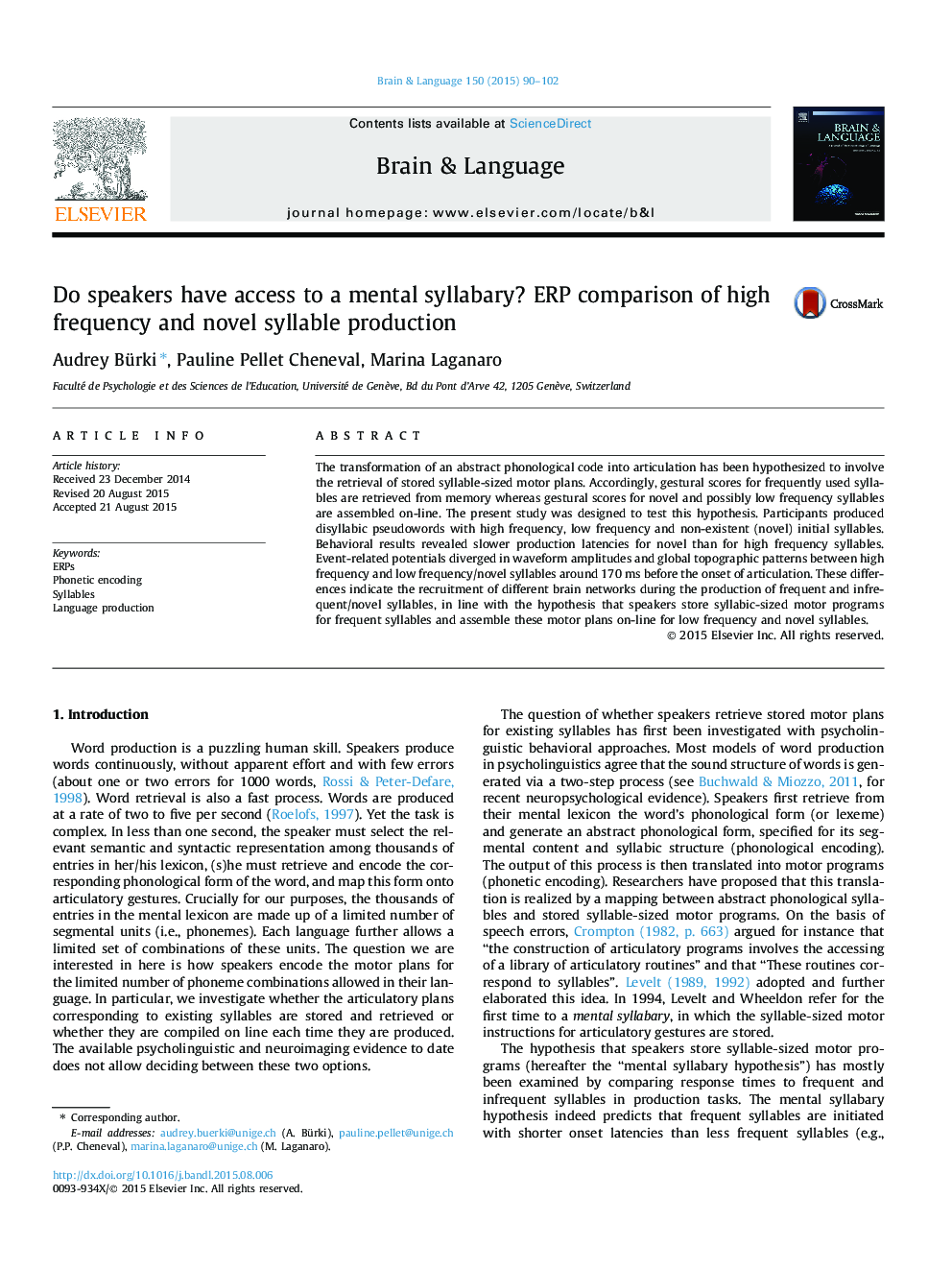| کد مقاله | کد نشریه | سال انتشار | مقاله انگلیسی | نسخه تمام متن |
|---|---|---|---|---|
| 7284034 | 1474031 | 2015 | 13 صفحه PDF | دانلود رایگان |
عنوان انگلیسی مقاله ISI
Do speakers have access to a mental syllabary? ERP comparison of high frequency and novel syllable production
دانلود مقاله + سفارش ترجمه
دانلود مقاله ISI انگلیسی
رایگان برای ایرانیان
موضوعات مرتبط
علوم زیستی و بیوفناوری
علم عصب شناسی
روانپزشکی بیولوژیکی
پیش نمایش صفحه اول مقاله

چکیده انگلیسی
The transformation of an abstract phonological code into articulation has been hypothesized to involve the retrieval of stored syllable-sized motor plans. Accordingly, gestural scores for frequently used syllables are retrieved from memory whereas gestural scores for novel and possibly low frequency syllables are assembled on-line. The present study was designed to test this hypothesis. Participants produced disyllabic pseudowords with high frequency, low frequency and non-existent (novel) initial syllables. Behavioral results revealed slower production latencies for novel than for high frequency syllables. Event-related potentials diverged in waveform amplitudes and global topographic patterns between high frequency and low frequency/novel syllables around 170Â ms before the onset of articulation. These differences indicate the recruitment of different brain networks during the production of frequent and infrequent/novel syllables, in line with the hypothesis that speakers store syllabic-sized motor programs for frequent syllables and assemble these motor plans on-line for low frequency and novel syllables.
ناشر
Database: Elsevier - ScienceDirect (ساینس دایرکت)
Journal: Brain and Language - Volume 150, November 2015, Pages 90-102
Journal: Brain and Language - Volume 150, November 2015, Pages 90-102
نویسندگان
Audrey Bürki, Pauline Pellet Cheneval, Marina Laganaro,